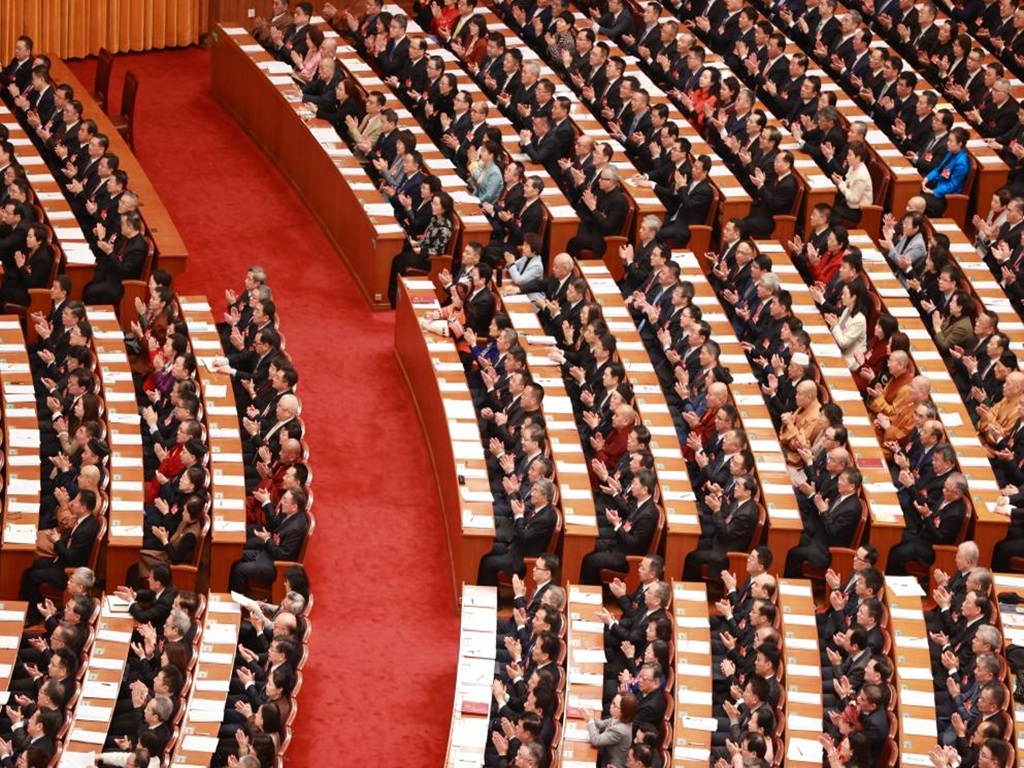China’s Two Sessions 2025: A Blueprint for Growth and Innovation

If there is one thing that the world has learned over the past few decades, it is that China does not wait for history to happen—it makes history. This is exactly the message that one can expect from Beijing in March 2025 when China’s top legislative and political advisory bodies meet for the annual Two Sessions. Against the background of the continuing impact of inflationary pressures on the global economy, geopolitical tensions and changing trade patterns, China’s leadership is set to present a policy package that exudes confidence, robustness and creativity. The Two Sessions will offer significant signals on where China is heading economically. In a world full of uncertainties, where Washington is rewriting trade rules and Europe is struggling with energy, China is saying one thing: The country will ensure its economic stability and advance its technological development.
One of the most anticipated topics of the 2025 Two Sessions is the GDP growth target that China will announce. The government is predicted to set the growth rate of around five percent, which is a moderate increase. This would be an important signal: Despite the risks affecting the country, including the possibility of new trade restrictions by the Trump administration, China has confidence in its economic strength. This is not only about the numbers. It is also a longer term strategy of achieving relatively high growth rates with low risks. While many other countries have experienced boom and bust, China’s leadership has prioritized stabilizing growth through equilibrium among infrastructure, technology and consumption. The goal is to create a solid domestic market that can weather shocks from the external environment and develop even stronger.
Perhaps the most striking signals that can be found in the leadership’s statements before the Two Sessions is the use of phrases such as “moderately loose monetary policy” and “more proactive fiscal policy.” These phrases indicate that the country is prepared to use stimulus tools selectively. While many advanced economies are constrained by high interest rates and debt limits, China has the fiscal flexibility to act. Expect to see more government spending on infrastructure, incentives for strategic industries, and measures to address issues with the finances of local governments.
China knows that overreliance on export growth is risky—especially when protectionism and geopolitics are rendering global trade relationships uncertain. This is why one of the key themes at the Two Sessions will be stimulating domestic consumption. Think of it this way: China is not just the factory of the world, but also the consumer of the world. Programs like trade-in for household appliances and automobiles are meant to encourage spending across various sectors.
One area in which China is definitely increasing investment is technological innovation. The country is driving growth of sectors including artificial intelligence, semiconductors, green energy, and advanced manufacturing. During the Two Sessions, policymakers are likely to present plans for enhancing strategic breakthroughs in critical technologies, boosting funding for R&D, and improving China’s competitive niche in emerging industries. This is not just about economic growth—it is also about sustaining China’s competitiveness in the global market. These new areas of focus include AI-driven manufacturing clusters, quantum computing, and other innovation strategies that will define the next phase of China’s economic development. Beijing’s focus on high-quality development is not just a slogan, it is a plan for the future. While national policies define the direction, provincial-level policies are crucial for implementing economic plans. Thanks to local efforts, community-level progress has been seen in infrastructure development, industrial growth, and consumer promotion.
Here is the big picture: While the majority of the world is discussing economic downturns, supply chain problems, and trade frictions, China is moving forward with a plan. It is quite probable that during the 2025 Two Sessions, China will focus on economic stability and sci-tech self-reliance. To global investors, multinational corporations and policy makers, knowing China’s economic direction is not only significant but necessary. The measures to be revealed in March will not only determine China’s future, they will affect the global market, supply chains, and innovation hubs. So, as China prepares to chart its next chapter, the world would do well to take note. The message from Beijing is clear: In the era of uncertainty, China is betting on the resilience, reform, and reinvention of its economic development. And, when China makes a bet, it usually pays off.
The author is a geostrategic analyst and columnist on international affairs. His work has been widely published by prestigious international news organizations and publications.
